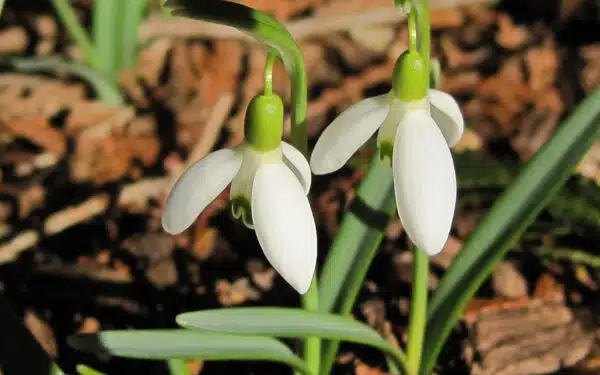January 31, 2020 – Updated on February 25, 2021

2175shares
See the checklist of 7 important things you can do in March in the garden as the spring is about to come and gardening season is beginning!
1. Clean-up
- Removing all the leaves, fallen twigs and branches. Even if you did this in the fall, more have probably blown your way or fallen.
- Cutting off the ratty-looking foliage of perennials that are above ground.
- Digging out all the weeds you can see.
- Cutting back vines that are growing where you don’t want them.
- Using a cultivator or gloved hand to loosen the mulch, acorns and other dried plant matter covering the ground around your shrubs and perennials. This allows water and air to more easily penetrate to the roots.
2. What To Plant

March is the time of year to plant bulbs like daffodils, tulips and hyacinths in your garden.
In the tropical north, sweet potatoes, squashes, melons, cucumbers and capsicums can go in your vegie garden while impatiens, marigold and petunias can go in your garden beds. These can also look great in pots and troughs to brighten up a courtyard or balcony.
A bit further south in the sub-tropical zone, leeks, rhubarb, zucchinis, artichokes and capsicums planted now will give you a bountiful spring harvest. Salvia, verbena and lobelia will add colour too.
Temperate regions should look to beetroot, Brussels sprouts, broccoli, carrots, cauliflowers, onions and peas for their veggie patch and calendula, pansies, dianthus and sweet pea in the garden.
In cold climates, sow broad beans, cabbages, lettuce, shallots, spinach and turnips. In your flower beds polyanthus, poppies and primula should be planted.
3. Repot Houseplants
March is a perfect time to give indoor plants a new lease on life by transplanting them into a larger pot with fresh soil. This is especially important if your plants are root bound (you’ll see roots coming out of the pot’s drainage holes). Also, if the roots are growing in a tight ball, loosen them to encourage new growth.
Tip: March is also a good time to prune houseplants that might have grown leggy over the winter. Pruning will also encourage new, more compact growth.
4. Prune
- March heralds the end of the dormant winter season. This makes it an ideal time for pruning all your trees and shrubs, all with one exception–pines.
- Allow their new growth to expand and flourish until the young needles turn half of the full size before pruning.
- However, spring flowering shrubs including lilac and forsythia can be pruned now, unless you don’t want to lose the flower buds on the delicate stems you are removing. If overgrown, these shrubs may be rejuvenated by cutting all the stems to the ground level, to stimulate nascent ones to emerge. It’s important for you to perform the process now and don’t delay it until the flowering is done.
- Elm, birch, maple and black walnut tend to ooze sap when pruned in late February due to the effect of water pressure on the bottom layer of moist soil. While this won’t harm the plant per se, you can consider pruning these trees in the second week of March.
5. Plant Fruit Trees and Shrubs
- As the pruning of established shrubs and trees should have been done by now, it’s a fairly accurate time for planting fruits and shrubs.
- Plant apple and cherry trees in a sunny yet sheltered spot, and carry out late plantings of soft, succulent fruits such as raspberry, gooseberry, and strawberry. Cut canes of raspberry to ground level, to stimulate new canes, which will eventually go on to fruit in fall (autumn). Also, ensure to feed your blueberry shoots with ericaceous plant fertilizer.
- Mulch rhubarbs with a thick layer of manure to keep them healthy and reduce moisture loss from soil. It’s a good time to plant fresh rhubarb crowns, though you should ensure not to cover them up with manure. With that being said, it’s recommended to cover the crowns with used-up buckets to exclude any light and trigger the development of long, tender rhubarb stalks.
6. Dig and Divide Perennials in March Gardens
Perennials such as hosta, chrysanthemum, and daylily can be dug and divided as soon as they break dormancy. Use a sharp spade to dig and lift the clumps and break them into smaller sections with a large garden knife. Replant the divisions as soon as possible.
Tip: Some perennials prefer being divided in the late summer instead of early spring. These include peony, lily, Oriental poppy, and bearded iris.
7. Clear Flower Beds
Rake leaves and mulch away from garden beds to allow the foliage of spring-flowering bulbs and perennials to poke through. During the winter, leaves can pack down, forming an impenetrable barrier to new growth. Plus when you pull back the mulch, the soil will warm faster because it’s exposed to the sun.
Tip: Use a plastic leaf rake when you remove mulch. Metal garden rakes with sharp tongs can rip tender foliage from emerging plants.

2175shares